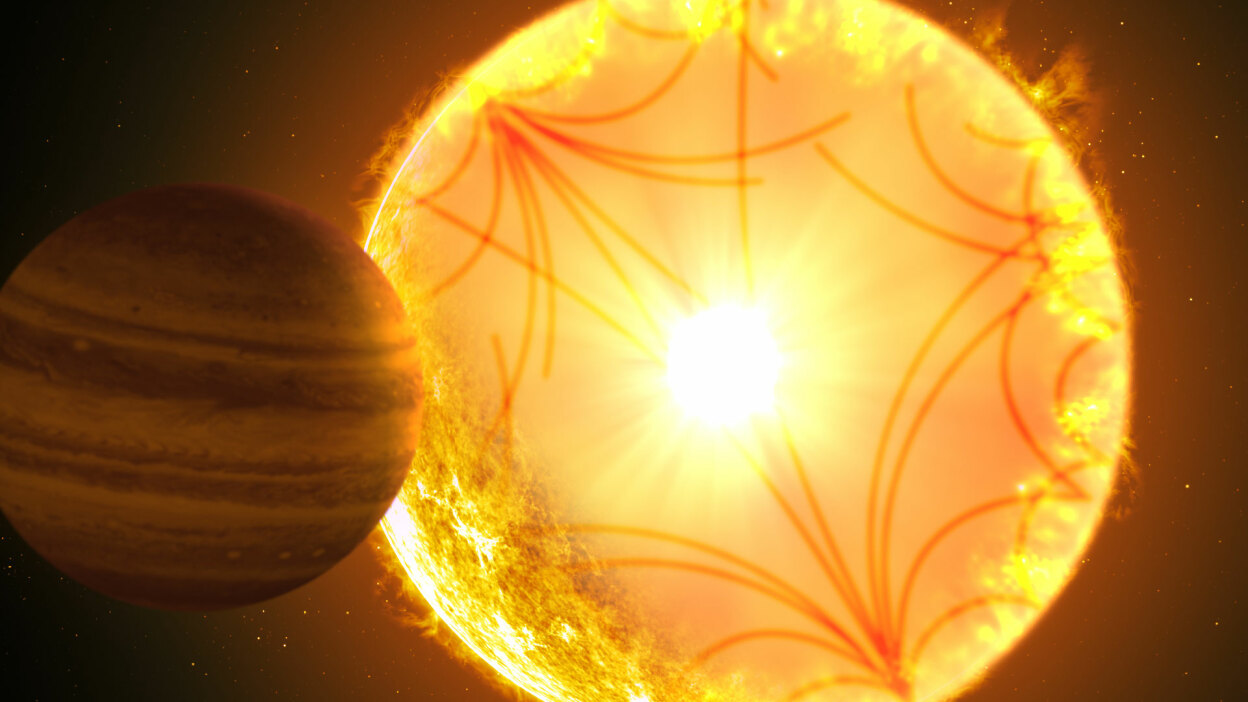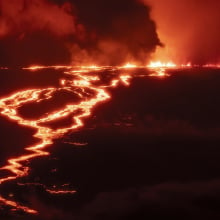Like bathtub water circling a drain, a planet far from Earth is swirling closer to its inevitable grim end: death by star.
Astronomers are watching an exoplanet known as Kepler-1658b whose orbit is getting ever-shorter around its dying host star. Theories have predicted this type of Doomsday scenario, but experts say this marks the first time in history they've observed one actually unfolding in space.
The discovery was published on Monday in The Astrophysical Journal Letters and reveals new information about the drawn-out demise awaiting many worlds, including what's predicted for our own. Scientists believe the sun, now middle-aged, may one day destroy Earth in a similar fashion, billions of years from now.
Tweet may have been deleted (opens in a new tab)
What happens for the exoplanet next is pretty bleak: The planet will spiral closer and closer until it ultimately crashes into the star, instantly obliterating it. That'll happen in a swift (well, by the universe's standards) 3 million or less years, according to NASA. That scientific process is called "orbital decay," referring to the shrinking path the planet travels around its star.
Kepler-1658b is classified as a "hot Jupiter," meaning it's a gas giant like our neighboring planet but is much closer to the star it's orbiting than Jupiter is to the sun. The exoplanet, located in a system about 2,600 light-years away, is eight times closer to its star than even Mercury is to the sun. Picture this: It takes less than four days for it to make a complete trip around the star.
Researchers have struggled to find exoplanets with shrinking orbits because the process is slow and difficult to measure. Shreyas Vissapragada, lead author of the study at the Harvard & Smithsonian Center for Astrophysics, found Kepler-1658b's orbit was contracting slowly, by 131 milliseconds per year. Using the observations of three telescopes, scientists detected that Kepler-1658b's revolutions had steadily slipped over the past 13 years.
Want more science and tech news delivered straight to your inbox? Sign up for Mashable's Top Stories newsletter today.
Tweet may have been deleted (opens in a new tab)
Scientists believe tides — the same thing that causes oceans to rise and fall — are the cause of these dwindling orbits. On Earth, the gravitational push and pull between the planet and the moon is the catalyst. For Kepler-1658b, it's the interaction with its star. Gravity distorts each body's shape, and the changes release energy, either pulling the two objects closer or farther apart.
But scientists don't clearly understand these dynamics yet.
"Now that we have evidence of inspiraling of a planet around an evolved star, we can really start to refine our models of tidal physics," Vissapragada said in a statement. "The Kepler-1658 system can serve as a celestial laboratory in this way for years to come, and with any luck, there will soon be many more of these labs."































